Riding the misty Ha Giang loop isn’t complete without a small ceramic cup of Ha Giang corn wine—clear, fragrant, and warming in the mountain air. Distilled by Hmong, Tay, Dao and other ethnic families, this spirit celebrates upland corn, spring water, wood-fired stills, and market-day hospitality. This guide explains how corn wine is made, what it tastes like, where to find the good stuff, how much to pay, and how to bring a bottle home safely - so you can sip like a local and remember the highlands long after your trip.
Recommended Tours for You:

What is Ha Giang corn wine?
Ha Giang corn wine (Vietnamese: rượu ngô) is a small-batch distilled spirit made from mountain corn kernels fermented with traditional starter cakes (men) and pot-distilled over wood. The result is a crystal-clear liquor typically 25–45% ABV, with a cereal-sweet aroma, light florals, and a gentle heat that lingers without burning. Unlike industrial alcohol, each household’s wine reflects micro-terroir—corn variety, water source, altitude, and the family’s own yeast blend.
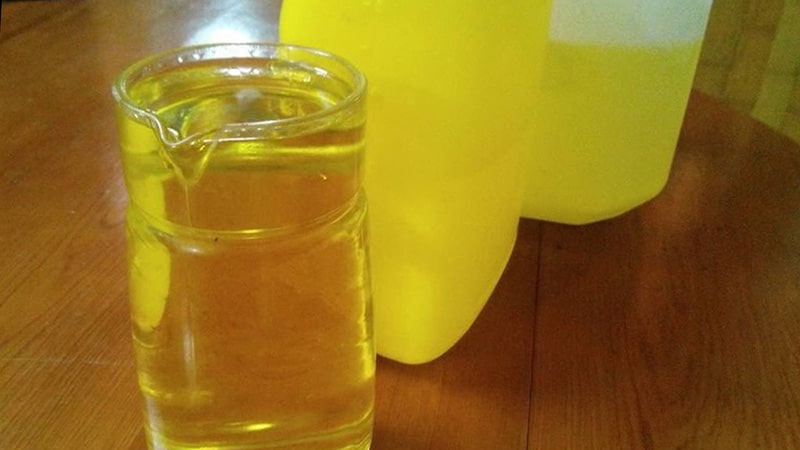
How Ha Giang corn wine is made (simple overview)
-
Corn selection: Waxy upland varieties harvested in the dry season for high starch, firm kernels, and aroma.
-
Cooking the mash: Corn is soaked, steamed, sometimes lightly cracked; a bit of rice may be added for sweetness and body.
-
Starter culture: Families crumble herbal yeast cakes (men) into the warm mash—proprietary blends of wild yeasts, herbs, and spices.
-
Fermentation: 3–7 days in jars or vats; cool nights slow fermentation, preserving aroma and preventing off-flavors.
-
Distillation: A pot still (copper or aluminum) with bamboo condenser. The harsh heads are discarded; the hearts become the bottled spirit; the tails may be redistilled or used for cooking.
-
Resting & bottling: Good makers let the spirit rest days to weeks to round the edges before filling clean, sealed bottles.
Why it matters: This process explains the spirit’s clean nose, soft palate, and why different villages taste subtly different.
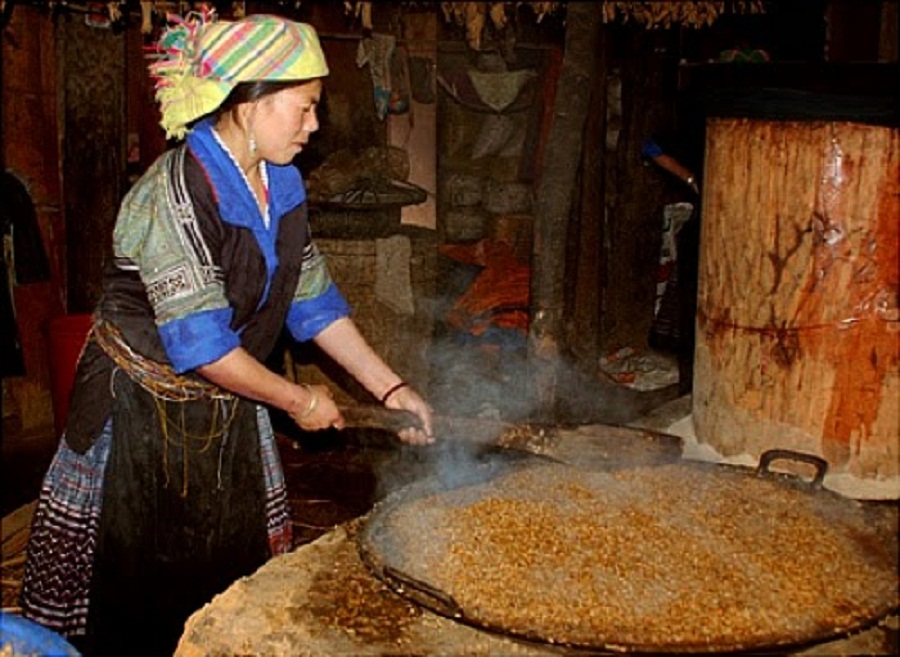
Flavor & ABV guide
-
Aroma: steamed corn, green rice, light smoke from wood fires, sometimes hints of wild herbs.
-
Palate: soft entry → mild cereal sweetness → warm, tidy finish. Well-made bottles are not solvent-sharp.
-
Body: from feather-light to oily-round depending on distillation cuts and proof.
-
ABV ranges:
-
25–30%: very approachable, sweet-grain, easy sipping.
-
35–42%: classic structure, best balance of aroma and warmth.
-
45%+: fiery, often for seasoned locals—enjoy carefully and with food.
-
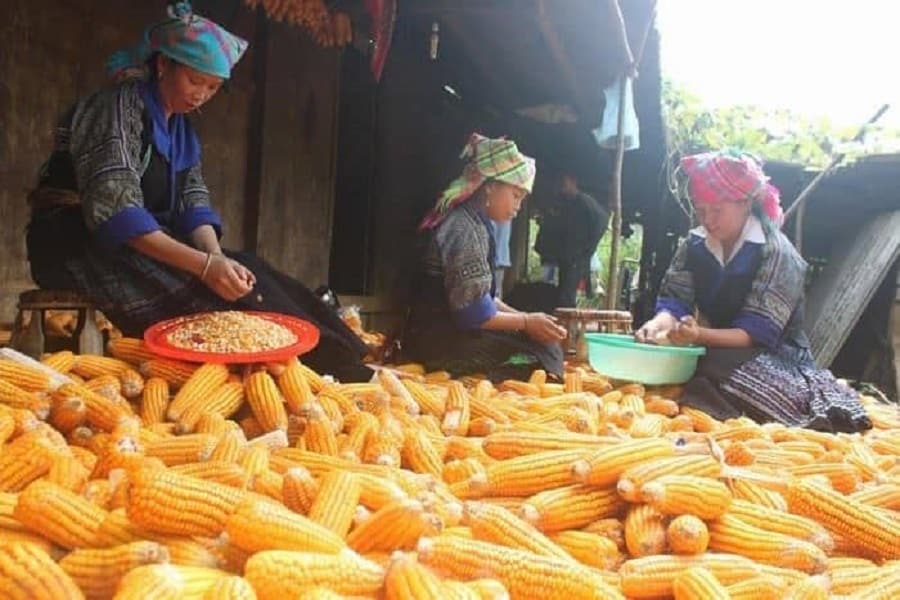
How to drink Ha Giang corn wine (like a local)
-
Sip, don’t shoot: Use small ceramic cups; toast, then take slow sips with conversation.
-
Temperature: Room temp on cool nights; very lightly chilled in warm months (never iced down).
-
Pairings: Buffalo jerky, grilled pork, smoked sausages, buckwheat cakes, mèn mén (steamed corn), pickled mustard greens.
-
Etiquette: Accept the first pour; if you prefer less, wet your lips and explain politely—respect matters more than volume.
-
Easy cocktail (traveler-friendly): 45 ml corn wine + honey + lime + ginger slice, shaken with ice—keeps the cereal perfume but tames the burn.
Where to try and buy in Ha Giang
-
Dong Van Sunday Market: Bustling stalls, multiple vendors—ask for small tastings.
-
Meo Vac Sunday Market: Bolder styles; great for adventurous palates.
-
Homestays: Many families distill; evening tastings by the kitchen fire feel intimate and authentic.
-
Co-ops & specialty shops (Ha Giang City / Dong Van Old Quarter): Better hygiene, sealed caps, labeled ABV and distillation date—ideal for gifts.

Buying checklist:
-
Look: crystal clear, no haze or sediment.
-
Smell: cereal-sweet, clean—avoid chemical or sour notes.
-
Seal: proper cap or heat-shrink; avoid re-used soda bottles unless very clean.
-
Story: Ask who made it, when, and from what corn—good sellers are proud to share.
Price & value
Expect 60,000–180,000 VND per 500 ml depending on ABV, packaging, and reputation. Very cheap bottles can be harsh or inconsistent; paying a bit more for clean distillation and safe storage is worth it. For gifting, choose sealed, labeled bottles from co-ops or respected homestays.
Safety tips (read before you sip)
-
Moderation: Mountain roads + strong spirits don’t mix. Never drink and ride.
-
Food first: Sip with warm food to cushion the alcohol.
-
Quality control: Cloudy appearance, solvent sting, or odd sweetness? Skip the purchase.
-
Health considerations: If you’re on medication or sensitive to alcohol, keep it symbolic or abstain.
-
Transport: Double-bag, keep upright, avoid pressure changes if the seal seems weak.
Packing it home (customs & care)
-
Check allowances: It’s a distilled spirit—review your destination’s alcohol import rules.
-
Wrap well: Bubble wrap, zip bags, and clothes around the bottle; place inside checked luggage.
-
Storage at home: Cool, dark, upright. Properly sealed corn wine keeps months to years.
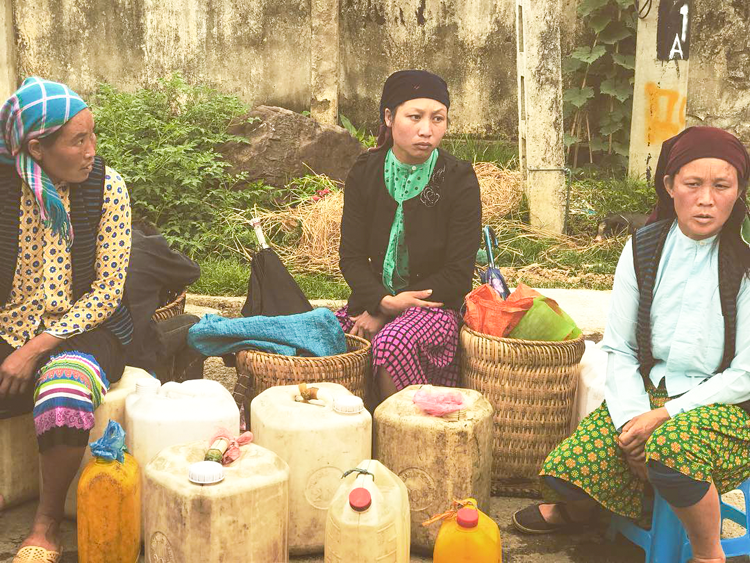
Cultural meaning
Corn wine is more than a drink—it’s a social handshake of the highlands. Shared at markets, weddings, and harvests, it anchors stories, seals friendships, and welcomes travelers. Take time to listen when someone pours for you: you’re tasting a family’s cornfield, a valley’s spring, and generations of craft.
Quick comparisons: corn wine vs. other Vietnamese spirits
| Feature | Ha Giang corn wine | Lowland rice wine | Fruit/herbal infusions |
|---|---|---|---|
| Base | Upland corn | Rice (sticky/regular) | Rice spirit + fruit/herbs |
| Flavor | Cereal-sweet, floral, clean | Neutral-smooth | Sweet, aromatic, sometimes medicinal |
| ABV | 25–45% | 25–40% | 20–35% (varies) |
| Best with | Jerky, grilled meats, buckwheat cakes | Daily meals, seafood | Dessert or aperitif |
FAQ – Ha Giang corn wine
Is it very strong?
Batches vary; 30–40% ABV is common and pleasantly sippable with food.
Does good corn wine give hangovers?
Quality cuts are usually gentler, but hydration, food, and moderation matter most.
Can I mix it?
Yes—honey, lime, ginger make a great highland spritz. Locals often prefer it neat.
How long does it keep once opened?
Tightly sealed in a cool, dark place, it keeps for months. Aroma softens over time.
Is homemade safe?
Often—if it’s clear, clean-smelling, and from trusted hands. When in doubt, don’t buy.
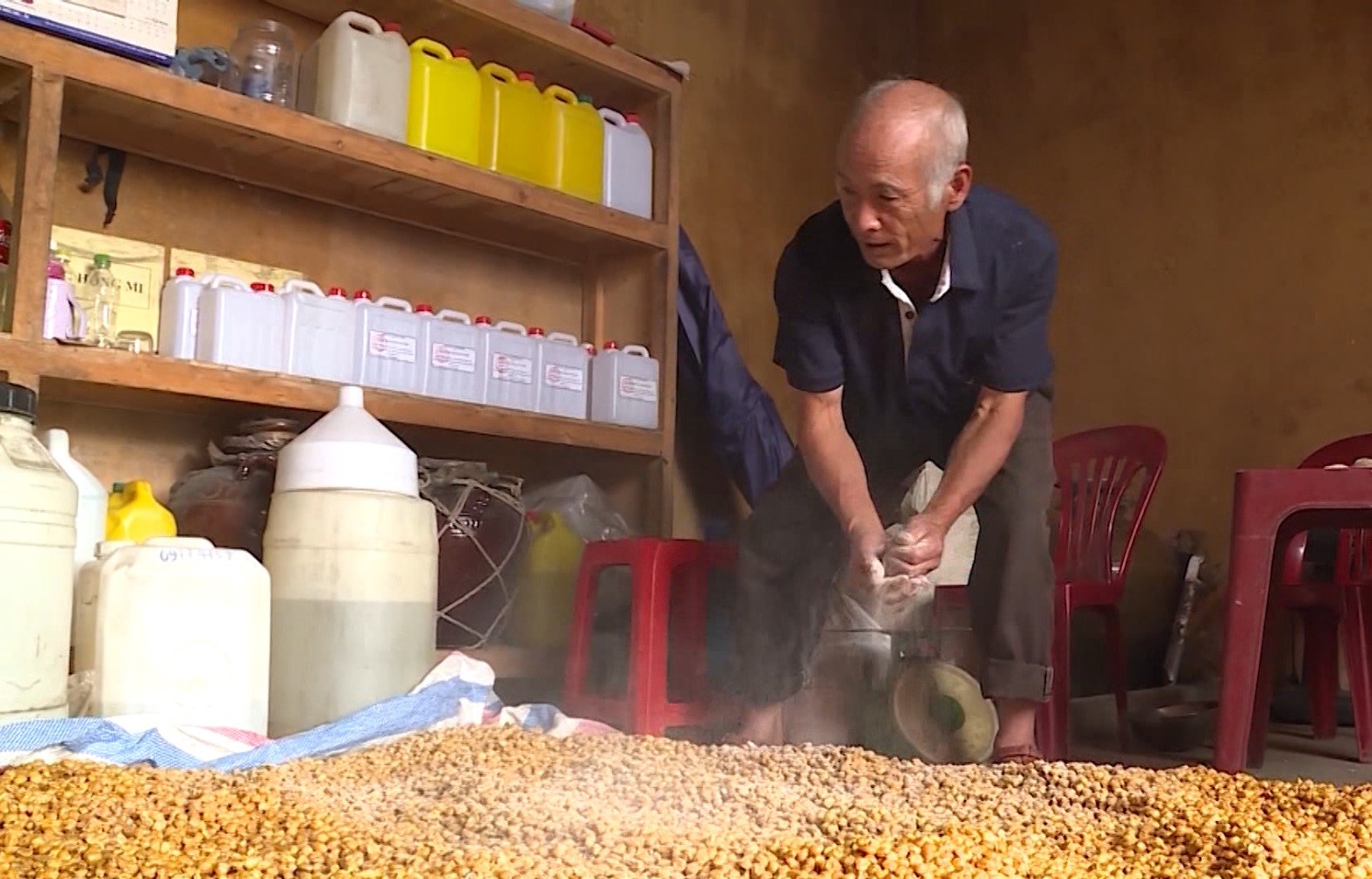
Conclusion
Ha Giang corn wine captures the region’s soul: rugged terraces, cold dawns, wood smoke, and warm market chatter. Seek out reputable vendors, taste before you buy, choose sealed bottles, and sip slowly with mountain snacks. Whether enjoyed neat in a homestay kitchen or mixed gently with lime and honey, this highland spirit makes a memorable, packable keepsake from Vietnam’s far north.






